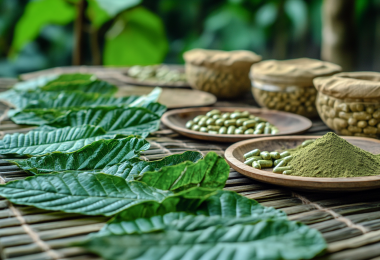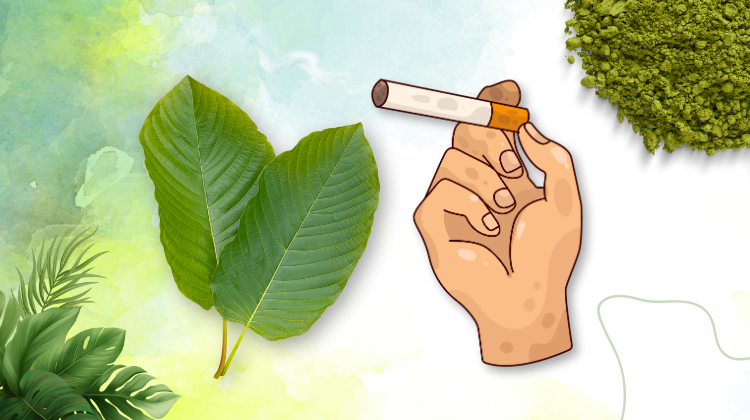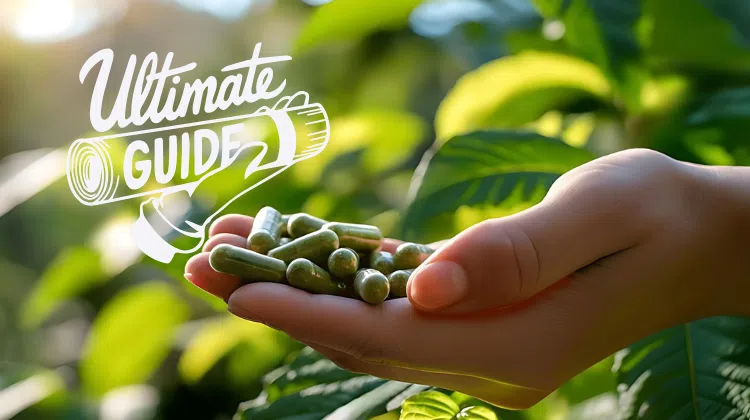
What is Kratom? The Complete Guide from Golden Monk
Introduction Kratom is a plant that inspires curiosity, debate, and misunderstanding. Some people hear about...
View PostYour cart is currently empty.
Continue ShoppingMenu
Cart
Your cart is currently empty.
Continue ShoppingSearch

A handful of Reddit threads and curiosity can make “smoking Kratom” sound like a shortcut. Faster kick-in, maybe a different kind of buzz—what’s not to like? Smoking Kratom isn’t the first thing most users think of. Tea, powder, or capsules? Those are the go-to choices. But every now and then, the idea of smoking Kratom sparks curiosity. Could it kick in faster? Feel different?
Some wonder if burning the leaves or powder might bring new effects. It’s a fair question for anyone exploring what this plant can do.
Even so, smoking Kratom isn’t common, and it’s not the way people in Southeast Asia have used it for centuries. Most stick to sipping or swallowing, and for good reason. But what makes smoking Kratom so tempting, and why do most pass it by? Let’s find out.
In this article, we’ll explore why some consider Kratom in smokable form and what researchers and health agencies have found about smoking Kratom.
Smoking Kratom is exactly what it sounds like: you dry the leaves (or use powdered leaf), roll or pipe them, light up, then inhale the smoke. A few users even sprinkle Kratom into herbal blends. The goal is simple: to see if heat can deliver the benefits that come with the alkaloids.
But truth be told, smoking Kratom isn’t all that popular. Most people stick to the tried-and-true methods like brewing tea or taking capsules. A few adventurous users have mixed Kratom into herbal blends or even tried snorting the powder, but those methods stay on the fringes. For most, the traditional ways still win out.
Most people use Kratom by brewing it into tea, chewing the leaves, or taking capsules. More recently, some have tried smoking Kratom powder or leaves, hoping for quicker effects. Here’s how these methods compare:
Traditional (Tea, Capsules, Gummies) | Smoking Kratom |
Tea, capsules, or chewing fresh/dried leaves | Burning and inhaling Kratom smoke |
Slower onset, longer-lasting | Faster onset, short, and unpredictable |
Better use of active compounds | Heat destroys alkaloids, wasting the product |
Lower risk | Higher risk: lung irritation, toxins |
Used for centuries | Modern, not traditional |
Even though you can smoke Kratom, it’s far less effective and carries more risks than conventional ways like tea or capsules.
Smoking Kratom powder might sound like a faster way to feel something, but the results often end up weaker and all over the place. Kratom’s main active, mitragynine, starts breaking down above 200 °C. A lighter tip can hit 600 °C—triple the threshold—so much of the good stuff vanishes in smoke rather than reaching your bloodstream.
On the other hand, brewing tea or taking capsules keeps more of those active alkaloids intact. That’s why traditional methods usually give steadier, longer-lasting effects. Plus, burning Kratom can release harsh byproducts that may bother your lungs, something you don’t face when you drink it.
All of this makes smoking Kratom pretty unpredictable and less reliable. While it’s technically possible, experts often caution against it because it can be less effective and bring extra health risks compared to simply sipping tea or swallowing a capsule.
Smoking Kratom isn’t just less effective; it can also be riskier for your health. As per a research paper published on PubMed, burning Kratom creates Kratom smoke full of harsh particles and toxins, which can irritate your lungs and airways over time. Unlike tea or capsules, which keep most of the alkaloids intact, smoking introduces harmful byproducts from combustion.
Health experts, including the FDA and DEA, warn that Kratom can be addictive, especially when people use faster methods like smoking Kratom powder or snorting Kratom. There have also been reports of liver damage, seizures, and mental health problems, though these often involve mixing Kratom with other substances.
While Kratom itself is legal in many places, smoking it brings extra health concerns; traditional use doesn’t. Overall, inhaling Kratom smoke offers few tangible benefits and adds significant risks.
Technically, yes, but “safely” is a stretch. You’d need large amounts, lose potency to heat, and expose your lungs to smoke toxins.
Onset is quicker, but the effect fades in under an hour and varies each time.
No, most lab data show lower alkaloid delivery because heat breaks them down.
A quality vape set under 200 °C preserves more alkaloids and reduces combustion by-products, but ingesting remains the gold standard.
Smoking Kratom might sound appealing for quicker effects, but it tends to be less effective and more unpredictable than traditional methods. Burning Kratom can destroy active compounds, which means you often get weaker or inconsistent results while also inhaling Kratom smoke.
Traditional approaches, like brewing Kratom tea, chewing the leaves, or taking capsules, are better studied, longer-lasting, and generally considered safer. These methods help preserve more of Kratom’s natural alkaloids without introducing combustion byproducts.
While it is technically possible to smoke Kratom, most experts recommend sticking to oral use instead. This approach offers steadier effects and avoids the added irritation and waste that comes with burning. If you choose to use Kratom, it’s wise to stay informed, choose tested products, and consider traditional preparation methods rather than smoking.

Introduction Kratom is a plant that inspires curiosity, debate, and misunderstanding. Some people hear about...
View Post
Ever wondered what’s really in your Kratom? Lab test reports are the key to understanding...
View Post
Are you also confused about which Kratom form you should try for your busy schedule?...
View PostBy clicking yes you also confirm that you have read and agree to GoldenMonk's Terms of Service and Privacy Policy and Goldenmonks’s service provider’s terms of service and privacy policy.